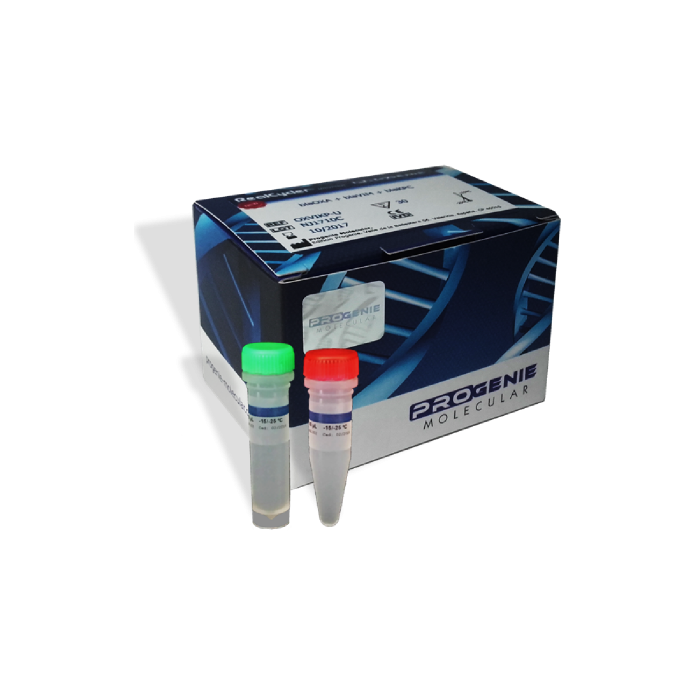Monkey TNF alpha Elisa Kit
€0.00
In stock
SKU
SEKMY-0001
Catalog Number: SEKMY-0001
Detection Range: 31-2000 pg/ml
Sensitivity: 6 pg/ml
Request Manual
Questions? Contact us!
Detection Range: 31-2000 pg/ml
Sensitivity: 6 pg/ml
Request Manual
Questions? Contact us!
Background:
Tumor necrosis factor alpha (TNF-a), also known as cachectin and TNFSF2, is the prototypic ligand of the TNF superfamily. It is a pleiotropic molecule that plays a central role in inflammation, apoptosis, and immune system development. TNF-a is produced by a wide variety of immune and epithelial cell types. Human TNF-a consists of a 35 amino acid (aa) cytoplasmic domain, a 21 aa transmembrane segment, and a 177 aa extracellular domain (ECD). Within the ECD, human TNF-a shares 97% aa sequence identity with rhesus and 71% - 92% with bovine, canine, cotton rat, equine, feline, mouse, porcine, and rat TNF-a. The 26 kDa type 2 transmembrane protein is assembled intracellularly to form a noncovalently linked homotrimer. Ligation of this complex induces reverse signaling that promotes lymphocyte costimulation but diminishes monocyte responsiveness.
Cleavage of membrane bound TNF-a by TACE/ADAM17 releases a 55 kDa soluble trimeric form of TNF-a. TNF-a trimers bind the ubiquitous TNF RI and the hematopoietic cell-restricted TNF RII, both of which are also expressed as homotrimers. TNF-a regulates lymphoid tissue development through control of apoptosis. It also promotes inflammatory responses by inducing the activation of vascular endothelial cells and macrophages. TNF-a is a key cytokine in the development of several inflammatory disorders. It contributes to the development of type 2 diabetes through its effects on insulin resistance and fatty acid metabolism.
Long Name: Tumor Necrosis Factor alpha
Synonyms:
TNF, DIF, TNF-alpha, TNFA, TNFSF2, Tumour necrosis factor, Tumour necrosis factor alpha, TNF-a, Tumor necrosis factor, TNLG1F
Sample Type:
Serum, Plasma, Cell culture supernatant.
Assay Lenght: 2-2.5h
Tumor necrosis factor alpha (TNF-a), also known as cachectin and TNFSF2, is the prototypic ligand of the TNF superfamily. It is a pleiotropic molecule that plays a central role in inflammation, apoptosis, and immune system development. TNF-a is produced by a wide variety of immune and epithelial cell types. Human TNF-a consists of a 35 amino acid (aa) cytoplasmic domain, a 21 aa transmembrane segment, and a 177 aa extracellular domain (ECD). Within the ECD, human TNF-a shares 97% aa sequence identity with rhesus and 71% - 92% with bovine, canine, cotton rat, equine, feline, mouse, porcine, and rat TNF-a. The 26 kDa type 2 transmembrane protein is assembled intracellularly to form a noncovalently linked homotrimer. Ligation of this complex induces reverse signaling that promotes lymphocyte costimulation but diminishes monocyte responsiveness.
Cleavage of membrane bound TNF-a by TACE/ADAM17 releases a 55 kDa soluble trimeric form of TNF-a. TNF-a trimers bind the ubiquitous TNF RI and the hematopoietic cell-restricted TNF RII, both of which are also expressed as homotrimers. TNF-a regulates lymphoid tissue development through control of apoptosis. It also promotes inflammatory responses by inducing the activation of vascular endothelial cells and macrophages. TNF-a is a key cytokine in the development of several inflammatory disorders. It contributes to the development of type 2 diabetes through its effects on insulin resistance and fatty acid metabolism.
Long Name: Tumor Necrosis Factor alpha
Synonyms:
TNF, DIF, TNF-alpha, TNFA, TNFSF2, Tumour necrosis factor, Tumour necrosis factor alpha, TNF-a, Tumor necrosis factor, TNLG1F
Sample Type:
Serum, Plasma, Cell culture supernatant.
Assay Lenght: 2-2.5h
| Is Featured? | No |
|---|
Write Your Own Review

